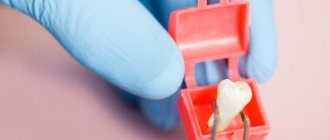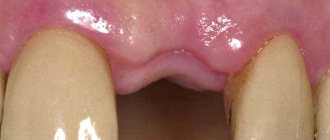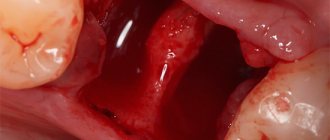Dental practice shows that the eruption of wisdom teeth often occurs with complications. When caries appear, they are not treated, but removal is recommended. As a result, these units, called third molars by dentists, are rarely preserved. Today we will talk about the reasons why swelling occurs after wisdom tooth removal. We will also find out what actions are recommended by experts in cases of complications after surgery.
Some information about third molars
As a result of evolutionary changes, the human jaw has decreased in size. This is due to the fact that more and more dishes are being consumed that do not require intensive chewing. Such objects of civilization as cutlery have simplified the task of grinding food for humanity. All this led, as we have already mentioned, to the transformation of the jaw arch.
Typically, third molars, or wisdom teeth as they are popularly called, erupt at a fairly mature age. All other units had long since been formed and taken their places by this time. This is why there is often simply no room left for the placement of third molars. In this regard, various complications arise that cause a person many unpleasant moments.
According to statistics, about 25% of the population is faced with the fact that their wisdom teeth were never able to erupt. Next we will look at how such situations are dangerous. In approximately 10% of our contemporaries these units are not formed at all. The rest of the population sooner or later faces problems associated with teething or removal.
In connection with these situations, several questions become relevant. For example, many patients are interested in how to relieve swelling after wisdom tooth removal. We will look at everything in order. We will find out why soft tissues swell, in what cases it is necessary to sound the alarm and, most importantly, how to alleviate the situation.
In what cases can swelling of the cheek be normal?
Please note that swelling of the cheek may appear not only immediately after tooth extraction (or the next morning), but only a few days later. The last scenario will definitely indicate the development of inflammation. Therefore, the norm may be the occurrence of swelling of the cheek or gums - in the first hours after removal, or the next morning. When it might be normal:
- After a complex tooth extraction – in this case, tooth extraction is often accompanied by incisions in the gums, cutting out bone tissue with a drill, and dislocation of tooth roots with special elevators. All this leads to significant trauma to bone tissue, as well as soft gum tissue. And therefore, it is quite natural that after a complex extraction you may experience swelling, and this happens especially often when it comes to the complex removal of wisdom teeth.
What does a complex wisdom tooth extraction look like?Moreover, if your cheek is swollen after the removal of the 8th tooth, then the appearance of swelling of the surrounding soft tissues can gradually lead not only to facial asymmetry, but also to temporary difficulty opening the mouth, as well as painful swallowing. Therefore, according to the rules, after a complex tooth extraction, the doctor is always obliged to schedule the patient for a second examination (the very next day) so as not to miss the development of inflammatory complications.
- After the removal of wisdom teeth , swelling can appear not only after a complex wisdom tooth removal, but also if the removal of the 8th tooth was relatively simple. The fact is that with a small length of the body of the lower jaw, with a small size of the upper jaw, the wisdom teeth may be partially located in the depths of the soft tissues (moving soft tissues of the oral cavity). Such a tooth can be removed easily, but with such localization of 8 teeth, swelling of the soft tissues can easily occur.
- When a tooth was removed due to inflammation - if the tooth was removed due to purulent inflammation (i.e. at the time of removal you could have symptoms such as swelling of the gums, pain when biting the tooth, the presence of a fistula on the gum with purulent discharge).
According to the rules, in this case, after removal, the doctor must wash the wound with an antiseptic, put medicine (Alvogel) into the hole of the extracted tooth, and also prescribe antibiotics to prevent suppuration of the blood clot in the hole. The development of soft tissue edema in this case is due to the fact that any surgical operation on inflamed tissues always leads to more pronounced edema. Those. in this case, swelling will not necessarily indicate the development of a complication. But on the other hand (even with prophylactic antibiotics) increasing swelling of the cheek may also indicate a complication that requires a visit to the doctor. - If you have had a gum incision made – if the tooth was removed due to pain and inflammation, then an inflammatory infiltrate (slight swelling) could be present on the gum or in the area of the transitional fold. Making an incision in this case has the purpose of 1) releasing pus if a purulent abscess has already formed, 2) preventing the formation of an abscess after tooth extraction. An incision is made in the center of the infiltrate; usually a thin rubber drainage is inserted inside it.
Making an incision in the area of the transitional fold (i.e., where the gum meets the cheek) can always lead to the appearance or increase of existing swelling of the cheek. According to the rules, if a doctor opens an abscess along a transitional fold, the patient should always be scheduled for a re-examination the next day. If the infiltrate was opened, but no pus was obtained, then in the absence of complaints from the patient, the latter is sometimes recommended to independently remove the drainage from the wound after a few days (24stoma.ru).Opening an abscess along the transitional fold -
- Complaints that the cheek is swollen after tooth extraction occur very often in certain groups of patients. For example, hypertensive patients, as well as people with a significant amount of subcutaneous fat on the face, are predisposed to the appearance of edema after tooth extraction. In these patients, swelling of the cheek may appear after a simple simple removal.
What symptoms in this case will indicate the absence of inflammatory complications -
As we said above: swelling after tooth extraction usually appears either within a few hours after the intervention, or the next morning. Accordingly, only over the next day will it be possible to draw timid conclusions about whether there is a reason to worry or whether you need to urgently run to the doctor for a second examination. Let's look at the signs that indicate that the development of edema does not require urgent intervention -
- The swelling that appears is not too pronounced and does not tend to increase. The latter means that the swelling that occurs the next morning after tooth extraction should not increase further in the evening. But if the swelling tends to further increase, this is a bad prognastic sign. Also not a very good sign is hardening of soft tissues, i.e. Normally, edematous tissue should be soft, but if tissue compaction (infiltrate) appears in the center of the edema, then this is a sign of suppuration.
- If you do not have a fever, especially an increasing one - if you did not have an elevated temperature at the time of tooth extraction, then normally it should not be elevated the day after the extraction.
At the same time, a slight temperature of up to 37.5 in the evening on the day of removal (after a complex removal or removal due to inflammation) is considered normal. If you had a high temperature before removal, then from the next day it should begin to decrease progressively. If an elevated temperature after tooth extraction appears only the next day or even later, this most likely indicates the development of complications and requires immediate consultation with a doctor.
- If you do not have severe pain, especially increasing pain, after a simple removal you may feel pain for only 1 day, after a complex removal it is normal for only a few days. The appearance of severe pain and prolonged pain for 4-7 days only indicate that the removal is excessively traumatic, and this is a question for the doctor’s skills. In any case, normally the pain should progressively decrease every day, but if the pain does not decrease or occurs, this is a symptom of the development of complications.
- The hole must be closed with a dense blood clot - after removal, the hole is filled with blood, which immediately coagulates, forming a blood clot in the hole of the extracted tooth. In some cases, the clot may not form, or it may fall out due to the patient rinsing the mouth too much. The absence of a blood clot in the socket will inevitably lead to the development of alveolitis (inflammation of the socket of an extracted tooth).
A fresh clot normally has a dark burgundy color, but after some time a whitish or grayish-yellow fibrinous coating will appear on its surface (this is normal and does not indicate inflammation). The clot should be dense, without an unpleasant odor. Pay attention to how the blood clot should look on the day of removal and a few days after (Fig. 6-7).What should a blood clot normally look like?
After tooth extraction, the cheek is swollen: what to do in this way, let's summarize... if the resulting swelling of the cheek is 1) soft to the touch and does not tend to increase and harden, 2) if there is no temperature, difficulty opening the mouth and painful swallowing, 3) if the hole is closed by a dense blood clot, 3) if there is no severe or constant aching pain in the area of the socket of the extracted tooth, then, in principle, we do not see any indication for an urgent visit to the dentist for a second examination.
How long does swelling last after tooth extraction?
There is no average answer to this question, because... much depends on the degree of trauma of the removal and the characteristics of the body. In some patients, swelling of the cheek may last only a few days, while in others it can last for a week. The problem here is that after a traumatic extraction (especially with cutting out the roots with a drill), very often a sluggish inflammation can occur in the socket of the extracted tooth for a very long time.
In this case, there may be only slight discomfort or no pain at all, but the swelling in this case can last quite a long time. Therefore, after a complex extraction, it is always worth going to the doctor for a second examination to see if the socket of the extracted tooth and the blood clot in it are normal. By the way, you can also make the swelling go away faster.
How to relieve swelling after tooth extraction -
So, if the appearance of edema is associated with traumatic removal or making an incision along the transitional fold, we can significantly increase the rate of its reduction. At home, this can be done using compresses with a solution of dimexide (diluted 1:4 or 1:5, i.e. to obtain a 20 or 25% concentration). Dimexide is diluted with lukewarm boiled water.
A gauze bandage is soaked in the diluted solution and applied to the site of swelling for 20 minutes. A layer of cling film is placed over the gauze bandage, and then secured to the head with a bandage. The procedure can be done 1-2 times a day, the duration of the procedure is 20 minutes. An important point - in this case, you cannot place a thick cloth or towel on top of the cling film (this is usually done to make a thermal compress). If there is inflammation, a heat compress can be harmful.
In what cases should third molars be removed?
Often, as wisdom teeth grow, they deviate significantly to the side. In dentistry, such an anomaly is called dystopia. Depending on the degree of deviation from the norm, such units can cause various troubles. An incorrectly grown tooth can easily injure surrounding tissues. It can also put pressure on an adjacent unit by moving it. All this leads to pain and the onset of the inflammatory process.
There is also such a concept in practice as an impacted tooth. This is the name given to units that were never able to cut through. They often also cause soft tissue inflammation. The situation is resolved in several ways. In order to help the impacted tooth, the specialist excises the gum. If the unit has the correct location, then it is quite capable of being safely placed on the jaw arch. In cases of abnormal development of the third molar, it is simply removed.
There is another complication associated with tooth eruption - delay. This anomaly in dentistry is called retention. Sometimes these deviations from the norm also require surgical intervention.
Banal caries often leads to the removal of third molars. The whole problem lies in their location. The last teeth cannot be sufficiently treated during hygiene procedures. A toothbrush is simply not capable of removing all the plaque that has accumulated on them. Due to the same inconvenient location, third molars are not treated if carious lesions occur, but are immediately removed.
Swelling after wisdom tooth removal: why does it appear?
We all understand that during surgery, soft tissues are injured. The specialist, using instruments, cuts the gum to a greater or lesser extent. Consequently, swelling occurs after wisdom tooth removal. This is considered normal and very common. Such a tumor is called a natural physiological reaction. Usually, before performing an operation, a specialist warns about the possibility of its manifestation. This situation is not dangerous. But this is only if the swelling is truly physiological in nature. A day or two after surgery, it should begin to decrease or disappear altogether during this period. Painful sensations should also appear less intense every day. In such cases, the patient should not worry if he experiences swelling after wisdom tooth removal.
When not to panic
Why does my cheek swell after tooth extraction? Swelling is a normal reaction of the body, which indicates adequate wound healing. It is more likely to appear if the gums were already inflamed and infected before the extraction procedure. As a rule, this happens in advanced cases when a visit to the dentist has been postponed for a long time.
“Normal” swelling develops on the first day after surgery and reaches a maximum on day 2. At the same time, its degree is moderate, there is no severe pain and temperature rise above 380. Then it gradually goes away by 6-7 days (with severe extraction, recovery takes 10-14 days). This phenomenon should not cause alarm. But persistent or excessive swelling is already a pathology.
In many patients, swelling intensifies in the morning, after waking up, and then gradually subsides during the day.
The level and duration of swelling is directly dependent on the degree of tissue injury. If the wound is large, then the cheek will swell more after treatment of the tooth. It is especially difficult to pull out wisdom teeth, as well as dystopic and impacted (not fully erupted) elements of the dentition. Removing them requires a lot of effort; sometimes you have to literally gouge out the remains of bone tissue, so swelling is difficult to avoid.
Please note: it is more difficult for people with diseases of the cardiovascular system to undergo surgery, so they quite often experience situations like “a tooth was pulled out and a swollen cheek.”
Inflammatory process
The influence of this factor makes the occurrence of swelling inevitable. If the interval between the onset of pain and visiting a specialist is too long, then we can assume that an inflammatory focus has already formed. The soft tissues swell, turn red and pulsate with pain. At the time of removal, the doctor’s actions are, of course, aimed at eliminating the inflammatory process. He treats the hole with an antiseptic solution. If there is suppuration, the doctor may leave a drain in the wound to ensure the drainage of pus. Gives recommendations regarding the advisability of rinsing or taking medications orally.
Swelling of the gums may also form after the removal of a wisdom tooth. If it is not physiological in nature, this will indicate the addition of an infection. After all, the hole that remains in place of the tooth is an excellent gateway for various microbes to enter the body. To prevent this from happening, you must strictly adhere to the specialist’s recommendations after surgery.
Possible complications
Undesirable complications may occur after tooth extraction. Often patients experience alveolitis, that is, inflammation of the socket. This disease is accompanied by the following symptoms:
- intense pain;
- non-stop bleeding of the wound;
- swelling of the gums;
- deterioration of general condition;
- temperature increase;
- taste and smell of pus;
- fatigue.
In the absence of proper treatment, inflammatory processes can spread to other areas and organs. In this case, the patient's health condition will further deteriorate.
Signs of inflammation
If the following symptoms are noticed after the operation, you must contact a specialist again.
1. The patient is concerned about severe swelling after the removal of a wisdom tooth (over time it does not decrease, but increases in size).
2. Painful sensations increase in intensity.
3. Increased body temperature.
4. The patient’s general health has worsened.
5. An unpleasant odor has appeared from the oral cavity.
If at least one of the listed signs bothers the patient after surgery, an urgent need to contact the clinic. Self-medication is dangerous. There have been recorded cases where, as a result of neglect and untimely treatment, a harmless tooth extraction entailed serious consequences.
What to do to relieve swelling and pain in the cheek after tooth extraction
In addition to the time required for normal recovery of the body and reduction of swelling of the cheek, the following recommendations will bring the greatest benefit:
- Daily brushing of teeth is mandatory; try not to touch the wound or cheek with the brush.
- from the third day after removal, you can begin to carefully rinse your mouth with weak antiseptic solutions or herbal decoctions - chamomile, oak bark, yarrow.
- It is better to sleep on a high pillow, and not on a swollen cheek.
- give up alcohol and smoking for at least three days.
- food should not injure the wound; give preference to non-spicy and non-hot dishes; pureed vegetables, yogurt, and cream soup are perfect.
- Touching the socket, gums and cheeks with your tongue or fingers is strictly prohibited!
When medical attention is needed
You should definitely contact your dentist if:
- After tooth root removal, cheek swelling and pain last for more than a week.
- The body temperature is elevated, symptoms of general intoxication appear - headache, body aches, weakness.
- The pain increases and causes significant discomfort.
- The cheek is swollen and hurts not on the first day after the tooth extraction surgery. And later, such swelling of the cheek is a sign of the development of a new inflammatory disease - alveolitis.
- During removal, a hematoma formed on the gum. If it begins to fester, it is worth visiting a doctor and taking timely measures.
Treatment of edema in dentistry
In addition to local measures, your doctor may prescribe antiallergic drugs - they will reduce swelling of the cheeks and gums. For example, Zirtek, Suprastin, Tavegil.
Anti-inflammatory treatment with corticosteroids (prednisolone, hydrocortisone ointment) can also ease the postoperative period and relieve swelling of the cheeks, but their use should be monitored by a doctor due to many side effects and contraindications.
External discomfort from pain and swelling in the cheek can be relieved a little by cold compresses, this is especially true on the second day after tooth extraction, when the symptoms are at their maximum.
If a person takes antihypertensive drugs, bleeding from the socket lasts longer. You cannot stop taking the medications you need, but you should definitely tell your dentist about this - he will take action. Vikasol or vitamin K is good for blood clotting. It is administered by injection by the doctor himself before surgery. The wound can also be covered with fibrin film or sutured.
Diuretics will help reduce swelling of the cheeks, but they can harm people with kidney and heart diseases and lead to an imbalance of vital microelements in the body.
Swelling after complex surgery
A common occurrence in dental practice is swelling due to the removal of impacted and dystopic units. We have already mentioned that due to the abnormal location, development and difficulties in eruption, such teeth cause many problems. It happens that the third molar, with its roots, can intertwine with neighboring units or affect the nervous system. All these situations require careful attention and professional action on the part of the dental surgeon. During complex operations, soft tissues are significantly injured. Therefore, swelling after the removal of a wisdom tooth in the lower or upper jaw always occurs. In this situation, all that remains is to ensure that he sleeps as quickly as possible and that no complications arise.
Alveolitis
In all previously discussed situations, soft tissue swelling occurs on the same day. What to do if the physiological reaction passed safely, but after 4-5 days the tumor appeared again? There are such situations in dental practice. Swelling of the cheek after wisdom tooth removal may occur due to suppuration of a blood clot in the socket. Experts call this complication alveolitis. This situation requires immediate contact with a specialist. If the tumor forms again, then it is useless to try to get rid of it by rinsing, using antiseptics or antibiotics. The doctor should clean the infected socket, removing necrotic tissue. Next, he will treat everything with an antiseptic and inject a special medicine into the hole.
When swelling becomes a reason to visit the dentist - symptoms of complications
Sometimes after all the manipulations the situation worsens and obvious signs of complications appear. In addition to a growing tumor in the area of trauma, the following phenomena may raise alarm bells:
- severe redness of the mucous membrane, itching, shortness of breath and tachycardia. There may be rashes on the body, which are obvious signs of an allergic reaction. In such a situation, it is necessary to urgently consult a doctor so as not to lead the situation to anaphylactic shock,
- the appearance of severe pain, from which painkillers do not help,
- fever up to 38 degrees and above, sudden loss of strength, headache,
- the appearance of bad breath,
- absence of a blood clot in the socket, discharge of pus from the wound,
- the spread of swelling to the face, the appearance of pronounced asymmetry.
“I had a complex extraction with flux on the lower jaw. I had to cut my gums to remove the pus, then take antibiotics, and they even gave me sick leave at work. To be honest, until that moment I had no idea how serious this procedure was. By the way, they also prescribed antiseptic rinses, but I don’t remember the name. You just need to rinse very carefully; it’s better to just take the product into your cheek and hold it for a while. And no hot baths or drafts!”
OlyaLa, Kaliningrad, fragment from correspondence on the forum www.32top.ru
One of the symptoms is severe pain.
If the symptoms do not go away within a week, the pain intensifies, and the swelling increases in size, be sure to consult a doctor. If you delay a visit to a specialist, you can greatly aggravate the situation and provoke even more serious consequences of your own frivolity.
What will help relieve swelling?
Firstly, if swelling occurs in the soft tissues after surgery, cold compresses can be used. During the day you need to apply them to the sore spot for 20 minutes. This can be done three times a day. Cold will not only help reduce swelling, but also reduce the intensity of pain.
Secondly, if you can’t bear it, you need to take a painkiller (Analgin, Baralgin, Ibuprofen tablet).
Thirdly, starting from the second day after the intervention, you can rinse the mouth with antiseptics. Saline and soda solutions are suitable for this. You can also rinse with herbal decoctions (oak bark, sage, chamomile). Just need to rinse correctly. You just need to put an antiseptic in your mouth, hold it near the sore spot and spit it out. Repeat this several times.
Prevention
In order to avoid diseases that can lead to tooth extraction, it is recommended:
- Maintain oral hygiene by brushing your teeth at least 2 times a day;
- take vitamin complexes;
- eat a balanced diet;
- quit smoking;
- reduce the consumption of coffee, tea, and sweets to a minimum;
- promptly treat oral diseases;
- visit the dentist regularly.
Tooth extraction is a serious procedure that must be approached responsibly. After surgery, you should strictly follow the doctor's advice and prescriptions. If complications occur, you should immediately consult a doctor who will tell you what to do in this situation.
Share the article on social media. networks:
What is forbidden to do after surgery?
In order to avoid complications, you must follow the recommendations of a specialist.
- After the operation, there is no need to rush to get out of the chair. You need to spend at least 10 minutes in it. You should not leave the specialist’s office if you feel unwell.
- Press firmly on the gauze pad that is placed between the jaws after removal. It helps prevent swelling of the gums.
- Do not heat your cheek.
- You should not eat in the first three hours. And after this time, you need to choose soft foods and pureed dishes.
- Experts do not recommend eating hot foods, drinking soda, or alcoholic beverages after removing the unit. You should also not use a straw when drinking.
- Do not touch the hole with your tongue or hands.
- It is forbidden to go to the bathhouse or sauna.
- In order not to further injure the affected area, it is necessary to chew food on the other side of the jaw.
Hygienic procedures must be carried out carefully, without contact of the toothbrush with the injured gum.
Recovery period
After the operation, it will take some time for the body to return to normal. How many days? Swelling after wisdom tooth removal should decrease the very next day. At the very least, make sure it doesn't increase in size. The intensity of pain should also decrease. Of course, these times are approximate. After all, each patient’s body reacts differently. If the operation went without complications, and after it the wound did not become infected, then by the end of the week the patient will completely forget about going to the dentist. Complex cases and inflammatory processes may require more time to restore health. Everything will depend on how promptly the person consulted a doctor.
When it subsides
During the normal course of the process (when inflammation has not developed in the tissues caused by infection entering the wound), swelling of the gums and/or cheeks increases in the next 30 minutes -2 hours after tooth extraction. Over the subsequent period of time, swelling remains at its maximum level (usually about 1-1.5 days) and then gradually begins to subside. Often this process lasts about 1-2 more days. In young people, swelling goes away, on average, 12-24 hours faster than in older people.
In weakened patients, people with immunodeficiency states who do not adhere to appropriate treatment, there is a 40-50% probability that an infection will penetrate into the wound formed after tooth extraction. In this case, the swelling rarely goes away on its own within a standard time frame. If the body copes with the infection on its own, the swelling will subside 5-10 days after the pathogen is eliminated. Otherwise, the reaction may not go away for weeks or become a chronic process that can last for years.
Attention! The article provides average terms. Only a doctor can say exactly how many days the swelling will last and when it will completely subside. Therefore, we advise you to seek advice from a specialist.











